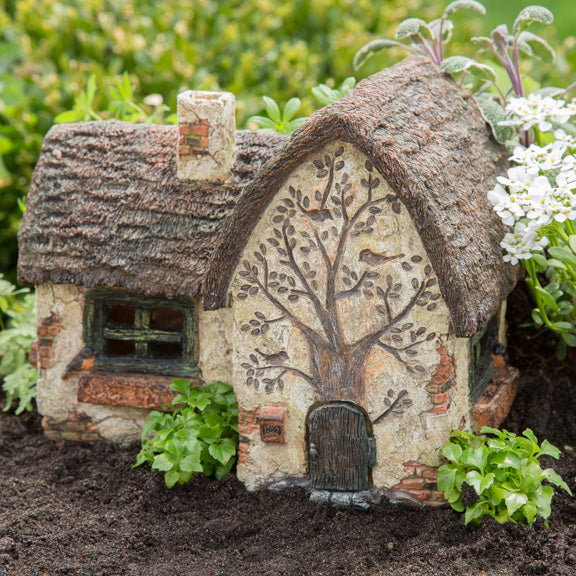Fairy gardening is a great way to step into the gardening world on a small scale. This activity is great for indoors or outdoors, and it is especially enticing for beginning plant parents or those who want a low-maintenance option. Fairy gardens can be whatever you want them to be and offer you endless possibilities when it comes to seasonal decoration. There's no right or wrong way to start or maintain a fairy garden, but you may want to consider a few things like location and material before you begin. Spending a little bit of time on preparation can be helpful in making your fairy garden vision a reality.
There are endless opportunities when building your fairy garden, but your chosen location may narrow down what materials you use. For a traditional outdoor fairy garden, you can find decorative pieces that stake directly into the ground or create a raised platform to build your fairy garden on. Some people use an old terracotta pot, and others start at the base of a large tree in their yard. Building your fairy garden outside will have its own challenges, but this option gives you the most freedom when it comes to plants. Most nurseries offer miniature plants like ferns or succulents, and, depending on your region, these can be perfect for fairy gardening. Choose your plants based on your region's climate and whether or not you want the plant to return every year. If you do want your plants to return, look for those labeled as "perennial" in your region. Plants labeled as "annual" for your region will not return the following year. For your outdoor fairy garden, it is beneficial to look for decorations that are meant to withstand sun and weather damage. However, with a bit of work, almost any decoration can be made weather-proof. Use a UV-protected clear outdoor sealant to protect your fairy garden decorations from the elements. You can find this spray at most hardware stores or craft stores. Once dry, your decorations should hold up to most weather.
Building an indoor fairy garden gives you a bit more flexibility when it comes to materials. You won't need to worry about your decorations weathering, and you have the option to decorate your fairy garden for year-round beauty in your home. Moss mats, foam, and fake grass are commonly used to create indoor fairy gardens and can also be found at most hardware or craft stores. For your indoor fairy garden, start with your vessel first. Planters, boxes, and baskets all make great containers for indoor fairy gardens, but you can use anything you'd like. When choosing plants for your indoor fairy garden, think about what level of house plant maintenance you want to take on. Some plants, like spider plants or air plants, take little care and make great foliage for indoor fairy gardens. Others, like ferns, may require more care when kept inside.
One of the most important aspects to consider before you start your fairy garden is the proportional size of your decorations. With so many different companies producing miniatures or fairy garden supplies there is a vast difference in the sizing of these decorations. Use product descriptions or pictures to determine if the decoration you want to add to your fairy garden will match the size of your other decorations and fairies.
Once you've decided on the location and materials for your fairy garden, it's time to start building. Whether you decide to build your fairy garden indoors or outdoors, you are sure to find this mindful practice rewarding and calming. Fairy gardening provides a year-round creative outlet. Customize your fairy garden for each season with unique themed decorations, and have fun with it!


Comments (0)